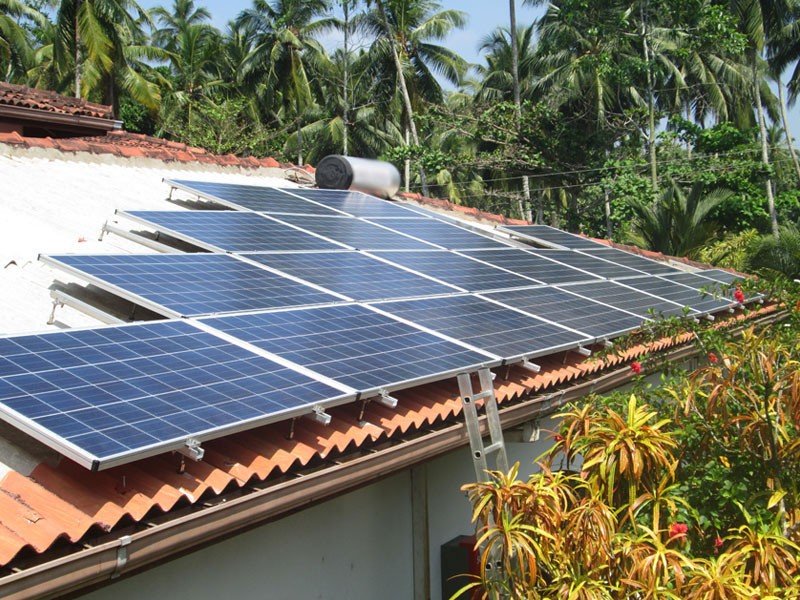Sri Lanka is taking major steps towards a solar future with this week’s announcement that it will extend the loan scheme for the installation of small solar power plants on residential and commercial buildings.
Although originally the scheme titled Soorya Bala Sangramaya (Battle for Solar Energy) applied only to the consumers whose monthly electricity bill topped 2,000 rupees (around $13), it has now been expanded to all consumers in the country given that fact that 40% of electricity users with average bills of no more than 300 rupees ($1.97) were unable to make use of the scheme.
This initiative comes in light of the government’s desire to add 200 MW of solar by 2020 and 1,000 MW by 2025, with an eye on harnessing the island’s vast solar potential.
The loans for installation of the new PV capacities can be obtained from both state and private banks and their limit has been increased from 150,000 rupees ($990) to 350,000 rupees ($2,306). Moreover, the maximum concessionary interest rate of 6% will be paid to consumers under the loan.
What makes installing solar panels under this scheme even more attractive is that the low-end consumers are offered an opportunity to choose between net metering, net accounting and net plus options in line with their electricity needs.
The net metering and net accounting mechanisms are suitable for the people with high and average incomes whose electricity generation may exceed consumption so they are able to feed the power they do not use into the grid and then use it at a later stage, or be paid for the excess amount. On the other hand, the net plus option is recommended to low-income households as it ensures that all the electricity generated by the rooftop system will be purchased by the utility.
As stated in the Sri Lanka Energy Sector Development Plan 2015-2025, the island country’s solar power has the potential to meet 32% of its annual power demand of around 10,500 GW, but so far only 0.01% of that potential has been realized. Moreover, its goal is to reduce the carbon footprint by 5% through to 2025.
This content is protected by copyright and may not be reused. If you want to cooperate with us and would like to reuse some of our content, please contact: editors@pv-magazine.com.




By submitting this form you agree to pv magazine using your data for the purposes of publishing your comment.
Your personal data will only be disclosed or otherwise transmitted to third parties for the purposes of spam filtering or if this is necessary for technical maintenance of the website. Any other transfer to third parties will not take place unless this is justified on the basis of applicable data protection regulations or if pv magazine is legally obliged to do so.
You may revoke this consent at any time with effect for the future, in which case your personal data will be deleted immediately. Otherwise, your data will be deleted if pv magazine has processed your request or the purpose of data storage is fulfilled.
Further information on data privacy can be found in our Data Protection Policy.